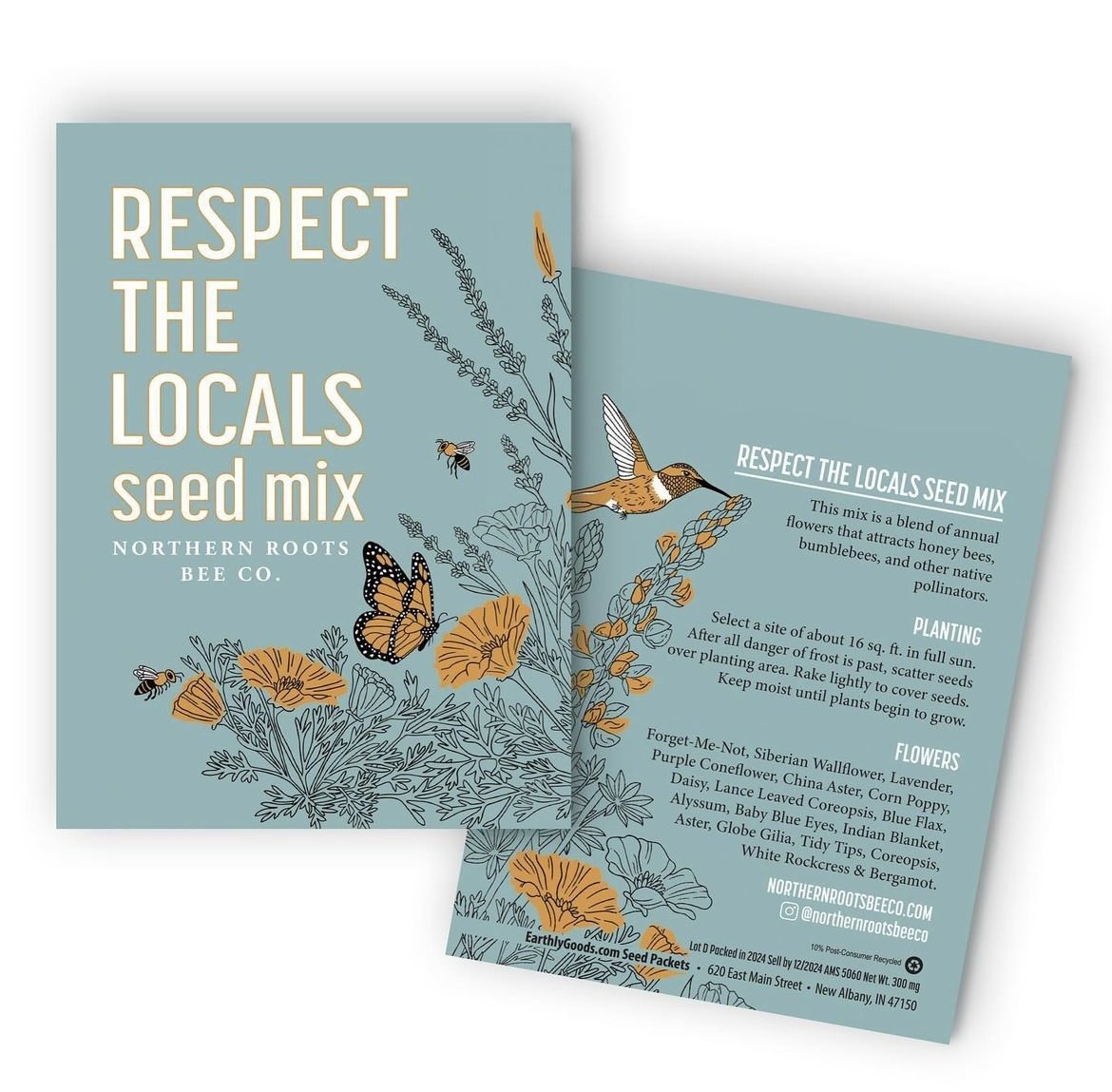Sowing Wildflower Seeds: A Beginner-Friendly Guide to a Pollinator Paradise
With fall well underway and the rains officially arriving in Santa Cruz, I thought it would be the perfect time to discuss how to establish a wildflower garden from seedsSowing wildflower seeds is an easy and wonderful way to nurture the environment while creating a vibrant, colorful landscape. Wildflower gardens are not only breathtakingly beautiful but also vital for supporting honey bees, native bees, and other essential pollinators. These hardworking creatures are integral to ecosystems and food production, and by planting wildflowers, you can play a part in their nourishment and survival.
Wildflower seeds can be spread in a variety of spaces, from open meadows to urban backyards, garden beds, or even containers. Fall is an especially ideal time to sow California native seeds, as it mimics the natural rhythm of native plants dropping seeds during this season. With the first fall rains, these seeds germinate in the cool, moist conditions of winter, taking root and flourishing as the soil warms in spring. Here’s how you can grow a thriving pollinator-friendly habitat in your space.
Why Choose Native Plants?
Native plants, such as wildflowers, grasses, shrubs, and perennials, are perfectly adapted to your region's environment and provide the best food sources for local pollinators. California gardeners can explore species suited to their area and soil type using resources like Calscape.org, a tool from the California Native Plant Society. For the best results, select seeds from reputable local sources or native plant nurseries to ensure they’re well-suited for your environment.
Preparing Your Site for Success
Before you start sowing, proper site preparation is key:
Clear the Area: Remove weeds and other plants to reduce competition for nutrients and sunlight.
Roughen the Soil: Lightly rake or scratch the soil surface to create a seedbed. Avoid deeply disturbing the soil, which can unearth weed seeds.
How to Sow Your Seeds
Sowing wildflower seeds can be as simple as scattering them, but a little technique will ensure better results. Here are some effective methods:
Broadcast Sowing: Scatter seeds evenly over the prepared area by hand or using a seed spreader.
Ensure Seed-to-Soil Contact: Press seeds gently into the soil using your hand, a rake, or a roller. Most native seeds germinate best when they’re exposed to light, so avoid burying them too deeply.
Mix with Sand: For fine seeds, mix them with sand before sowing. This makes it easier to distribute the seeds evenly.
Avoid Crowding: Spread seeds with enough space to allow seedlings to grow without competing for resources.
Caring for Your Wildflowers
Once your seeds are sown, care for them with these simple steps:
Watering: After sowing, water lightly to settle seeds into the soil if rain isn’t expected. During the growing season, let natural rains handle most of the watering, but monitor to ensure the soil remains moist (not soggy).
Weed Control: Remove invasive weeds carefully as seedlings emerge to prevent them from outcompeting your wildflowers
Protect Seeds from Birds: If birds are snacking on your seeds, cover the area with a light layer of straw or mulch—but keep it thin to ensure light reaches the seeds.
Mark the Area: Clearly mark your sowing site to avoid accidental trampling or disturbance.
Don’t Overwater: Too much water can harm germinating seeds and young plants.
A Gift for Pollinators and Your Garden
Sowing wildflower seeds is an act of care for the environment and a simple way to add beauty to your surroundings. By planting wildflowers, you’re not only creating a stunning garden to enjoy but also supporting pollinators that contribute to biodiversity and ecosystem health. It’s a win-win for everyone!


